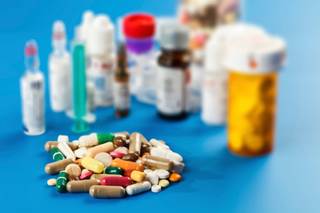|
OSHAWA -- Oshawa resident John Mash knows first-hand how a $1.2-million donation for new dialysis machines at Lakeridge Health will help people in the community.
He was on hand at a recent announcement by the Lakeridge Health Foundation that the dollars from the kidney dialysis campaign will be donated to Lakeridge Health for the purchase of 46 new kidney dialysis machines, including 18 machines for home use.
Ten years ago, Mr. Mash began undergoing dialysis due to kidney failure brought on by diabetes he had grappled with since he was 25 years old. He had progressively gotten sicker and sicker. As his kidney functioned dropped to between 12 and 15 per cent, just walking across a room became a challenge.
With the dialysis he could restore some of his energy.
“Anywhere between 35 and 40 hours a week I felt good,” said the 62-year-old. “You do it because you want to be healthy, I was able to get out walking more.”
In 2009, Mr. Mash received a kidney transplant from his niece, a gift so generous he still struggles to understand why she did it.
“She said my kids don’t have a grandfather so you’re going to be a grandfather for them.”
Now he shares his story to support Lakeridge Health where he says he received top-notch care.
“I’ll always tell my story. It’s an amazing thing I’m surrounded by heroes, my wife, my niece, the people at the hospital.”
The typical lifespan of a dialysis machine is five to 10 years, depending on how many hours it’s used, and each machine costs roughly $25,000. The Lakeridge Health Foundation has made replacing the hospital’s 87 aging dialysis machines one of its top fundraising priorities.
“The Province pays for the operating cost of health care and our hospitals and the reason why hospital foundations exist is to raise money for capital projects and equipment,” said Bob Baker, the Lakeridge Health Foundation’s former CEO.
Over the last three years the foundation has donated more than $4 million to Lakeridge Health towards the purchase of equipment, including funding toward a new CT suite, ultrasound machines, a portable breast specimen X-ray machine, dialysis machines and new hospital beds.
In 2013-14 the Lakeridge Health Foundation received a total of $5.28 million from 8,500 donors. That included two of the largest donations ever received by the foundation: $325,000 from the RBC Foundation for mental health programs in Durham and $2 million from a life-long Brooklin resident designated for complex continuing care.
Dollars come to the foundation in numerous ways, from the organization’s marquee large fundraisers such as the annual gala and golf tournament, corporate donations, donations designated in wills, and small fundraisers held within the community to benefit the hospital.
When the Province does contribute money for capital expenses, Lakeridge executive vice-president Tom McHugh explained that there’s often an expectation that the local community pitch in as well, citing the Durham Regional Cancer Centre as an example where the government provided funding but the community made a large contribution.
The foundation works with the hospital to determine where the funding should go.
“Two years ago in our discussions with the hospital around their key priorities for medical equipment, they identified they needed to replaces 87 dialysis machines,” explains Mr. Baker.
“We have good processes internally where we prioritize what we need, it’s not just put it on a list and we’ll get it, it’s really weighing the benefits of new technology, what are the things in highest need of replacement,” added Mr. McHugh.
As technology improves, patients receive better care. The dialysis machines in particular are essential to the hospital.
“They are the lifeline for these patients, as high-tech equipment goes,” explains Mr. McHugh. “Without out it, the impurities in their blood would build up and they would die; it’s a pretty modest amount of money for such lifesaving treatment.”
When people like Mr. Mash share their story, it’s a direct connection to the community.
“This donation represents hundreds of donors and they go out and tell this story to our community and the community in turn is generous in their donations,” said Mr. McHugh.
“Anytime someone can help out even if it’s a small way, it’s a positive way,” said Mr. Mash. “I’m amazed at the funds made available from people in our community helping people in need.”
KIDNEY DIALYSIS AT LAKERIDGE HEALTH
Hemodialysis at the hospital
• At any time there are between 270 and 275 patients
• The hospital has 62 machines between the Oshawa and Whitby sites
• The two sites deliver approximately 40,000 treatments a year
Home Dialysis
• Lakeridge currently has 45 home hemodialysis patients and 85 peritoneal dialysis patients
• Each year, the staff train 12 new home dialysis patients a year
HOW THIS IMPACTS YOU:
• Local hospitals rely on community donations for the purchase of new life-saving equipment
• A $1.2-million donation from the Lakeridge Health Foundation is replacing 46 aging kidney dialysis machines
• Lakeridge Health delivers more than 40,000 dialysis treatments each year in hospital and is the third-largest home dialysis provider in Ontario
• Kidney disease rates are expected to increase as it’s linked to both diabetes and aging
|
 Log in to explore the world's most comprehensive database of dialysis centres for free!
Log in to explore the world's most comprehensive database of dialysis centres for free!  Professional dialysis recruitment
Professional dialysis recruitment


